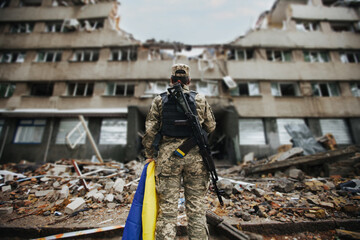Crossbows, Costs, and Comms: What You Need to Know

Podcast: Play in new window | Download
Sometimes the best questions don’t come from experts—they come from people living real lives, trying to get it right. That’s what this is.
In this article, I’m answering three listener-submitted questions that get to the heart of what practical preparedness looks like in the real world: Is a crossbow worth it? How do you handle guilt over prepping expenses? And how do you stay in touch with family when the normal communication methods fail?
Let’s walk through each question clearly and practically, just like we would if we were sitting at the kitchen table figuring this out together.
TL;DR: Practical answers to 3 prepper questions: crossbows, prepping guilt, and emergency communication with family.
Quick Look at What You’ll Learn
Question 1: Is a Crossbow Actually Practical?
Short answer? Yes, but it depends on your expectations.
I haven’t used one myself—yet. But I’ve been thinking about it, and here’s why:
A crossbow gives you a relatively quiet way to hunt game, which could be important in the quiet of a grid-down world. It’s not going to replace a firearm, and I wouldn’t count on it for primary defense, but it is a tool in the toolbox. And tools give you options. More importantly, it’s a skillset you can build, especially if you’re in a place where firearms are limited or unavailable. Be sure to check your state and local laws, though.
Here’s where a crossbow might make sense:
- Hunting game without drawing attention
- Training and recreation that sharpens your coordination and focus
- Solid workaround for those who can’t (or don’t want to) own a gun
That said, let’s be honest:
- It doesn’t compare to a firearm in stopping power or speed.
- You’re working with a shorter effective range—maybe 30 to 60 yards unless you’re highly skilled.
- Reloading is slower and requires more movement under pressure.
Still, if you’re looking to expand your skillset, get outside, and learn something that might be useful down the road, a crossbow’s not a bad option. Especially if it gives you more capability without breaking the bank.
Unless your name is Daryl Dixon, don’t count on it as your primary tool. But it’s a solid adjunct. And if you’re considering one, I say go for it—as long as it fits your situation and you’re not neglecting higher priorities.
As a reminder, although it’s not a firearm per se, it can still cause significant damage. Please be cautious with it and treat it as if it were a firearm.
💡 Related Resource“From easy operation and deadly accuracy to their versatility in the field, crossbows are an ideal choice for beginners, kids, and seasoned hunters alike.” — Crossbow Magazine
Question 2: “How do I not feel guilty for spending so much money on something that may or may not happen? Especially in this economy.”
Let’s get something straight: Feeling guilty for trying to protect your family is common—but unnecessary. Especially when money’s tight.
I’ve talked with a lot of preppers who either:
- Feel pressure from a spouse or family member
- Regret overspending and losing balance
- Or wrestle with the idea that they might be throwing money at something that never happens
Here’s how I break it down:
1. Budget Comes First
If you’re prepping in a way that damages your financial health, that’s a problem. Prepping should protect your future—not undermine it.
Stick to a budget. Plan and phase your purchases. Use your income like a toolbox—not a firehose. That’s how you stay in control.
2. Let Risk Drive the Spending
Use your personal risk profile to determine what matters most.
If your greatest risk is local grocery disruption, focus on food storage—not a new crossbow. If you’re worried about wildfires, look at evacuation planning—not bunker supplies.
Money should flow towards what gives you the highest payoff in real life—not the flashiest gear. Similarly, at some point, all of us with limited resources have to say Enough is enough.
While most of us would love to have a 20-year supply of food stockpiled, 14 days is probably more than you’ll ever need. So, once you have “enough” based on your risk profile, attend to other needs. You can always add more later when you’re finances allow.
3. Mindset Shift: It’s Insurance, Not Indulgence
This isn’t buying stuff “just in case.” This is a pre-positioning capability for when systems fail. If that’s a hard conversation to have with someone in your life, ask them this:
Do you feel money is wasted on EMS and firefighters when there’s no calls happening?
Preparedness isn’t about the likelihood of disaster—it’s about the consequences of something that is not a matter of if, but when.
Guilt shows up when your actions and priorities aren’t aligned. Stay rational. Stay responsible. And understand that “enough” is a moving target—but it’s a target you can hit.
Once you’ve met your key needs, stop. Breathe. Live your life.
Question 3: “How can I communicate with my daughter at college if normal communication goes down?”
This is a big one for parents—especially when kids are out of state or across the country.
The right answer here is simple: Build a PACE plan.
PACE = Primary, Alternate, Contingency, Emergency
Here’s how that might look for a college kid:
Primary: Cell phone (calls, texts, video)
Your go-to. Obvious, easy, familiar. However, it is also vulnerable to grid-down, tower failure, or network congestion. Some recent iPhone models now include limited satellite messaging for emergencies. While it’s not a full-featured communication tool, it allows for basic SOS and location messages when you’re off the grid. It’s built-in, doesn’t require an additional device, and may be good enough for a last-resort lifeline in remote areas or large-scale disasters. Just remember—you need open skies, not indoors or in heavy cover.
Alternate: Email or social media
These may stay up longer than cell networks—especially if Wi-Fi is still working. I have a battery backup that powers my Internet. Sending emails or communications through social media isn’t perfect, and it’s better than not having contact with one another.
Contingency: Garmin inReach
Another great option is a Garmin inReach device—a satellite communicator that can send and receive messages even when the grid is down. It’s not cheap, running around $300–$400 for the unit plus a monthly subscription starting at $15, but if communication is a priority, it’s worth considering. This is a great option for those who enjoy outdoor activities, such as hiking.
Emergency: Local point of contact
This could be a trusted roommate, resident assistant (RA), dorm staff, or even a professor. Someone who can relay basic information. Do you have friends who live in the region? They’re options too.
Acceptance and self-reliance
This one’s the hardest pill to swallow.
If everything’s down and she’s far away, there may be nothing you can do. That’s where prior conversations and planning come in. Lay out the options for her in advance and walk through them.
Expectations. Mindset. Self-sufficiency.
And most of all: confidence in her ability to adapt.
The Bottom Line
Preparedness isn’t about having it all figured out—it’s about doing the next right thing with what you have. That might mean asking a question that’s been on your mind, like whether a crossbow makes sense, how to handle the guilt of prepping expenses, or how to make sure your kid away at college can reach you when the cell towers go quiet.
If you’re working through those kinds of questions, you’re doing it right. You’re thinking critically, staying true to your situation, and making moves that fit your reality.
That’s what preparedness really is. Not anything crazy, just commonsense progress.
Thank you to everyone who sent in these questions. If you’ve got one of your own, drop it in the comments below.
📌 Next StepsTake five minutes to think through today’s questions. Does your spending feel out of balance? How would you reach family if phones went down? Jot quick answers and spot areas you can improve.







